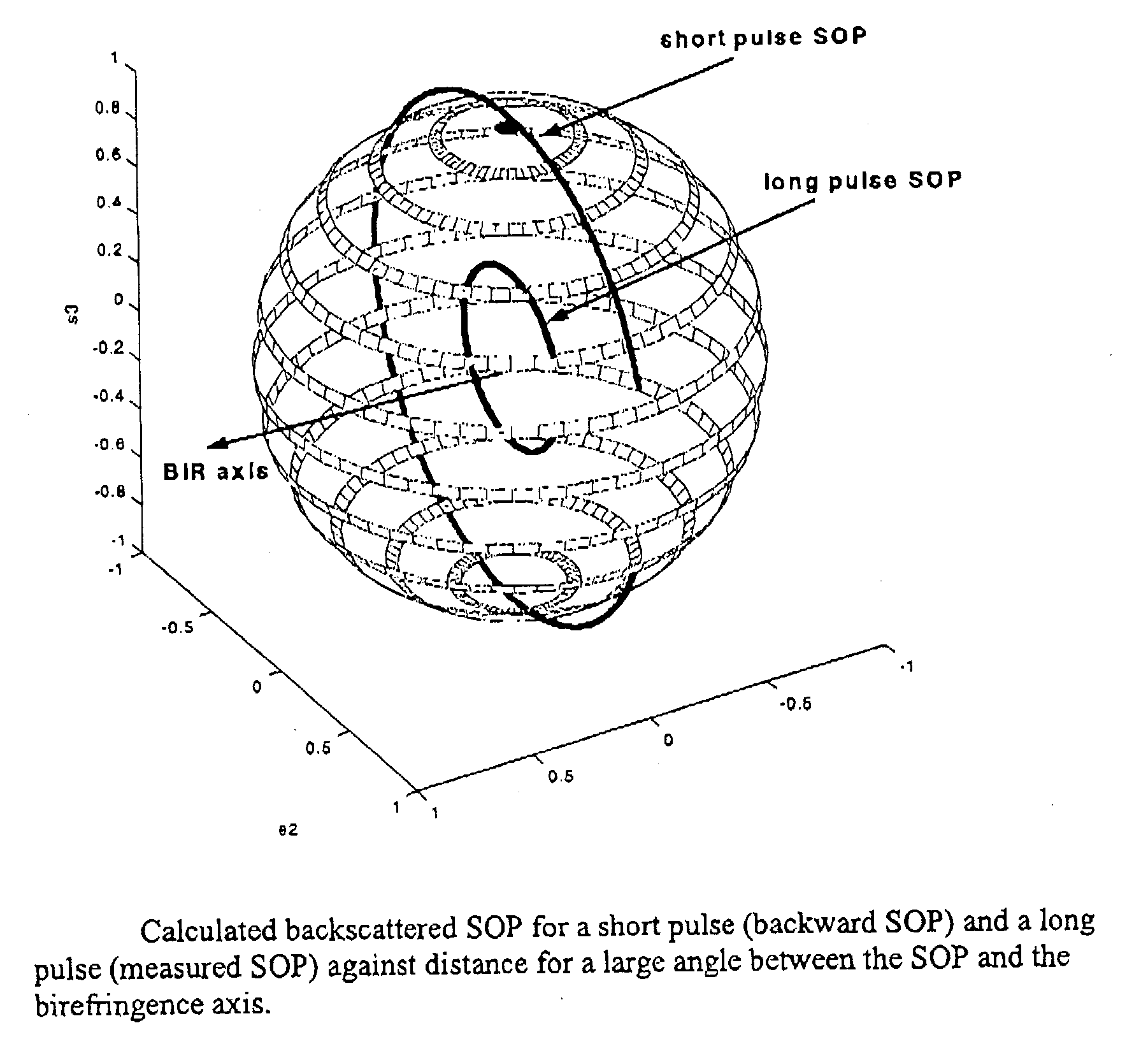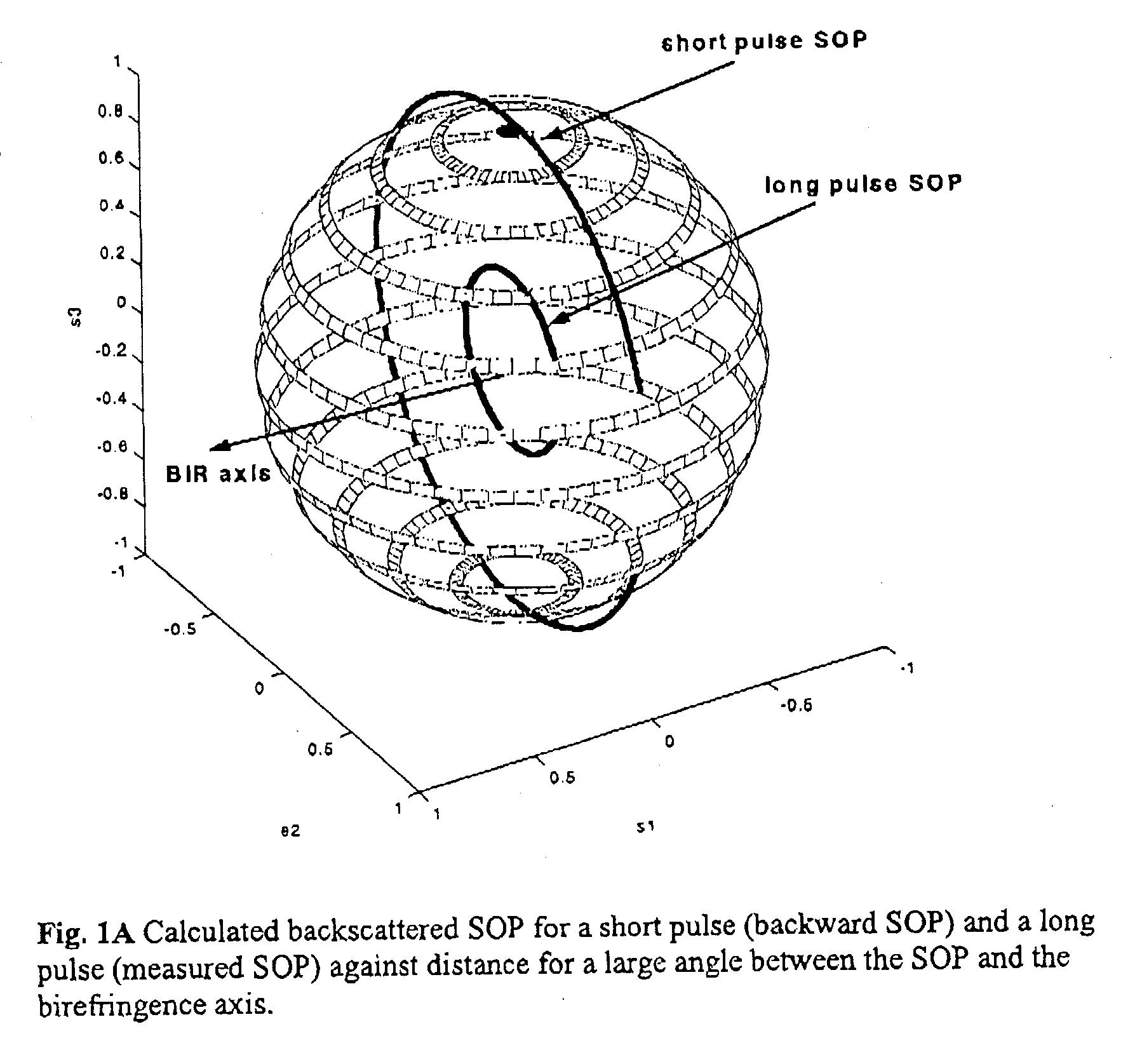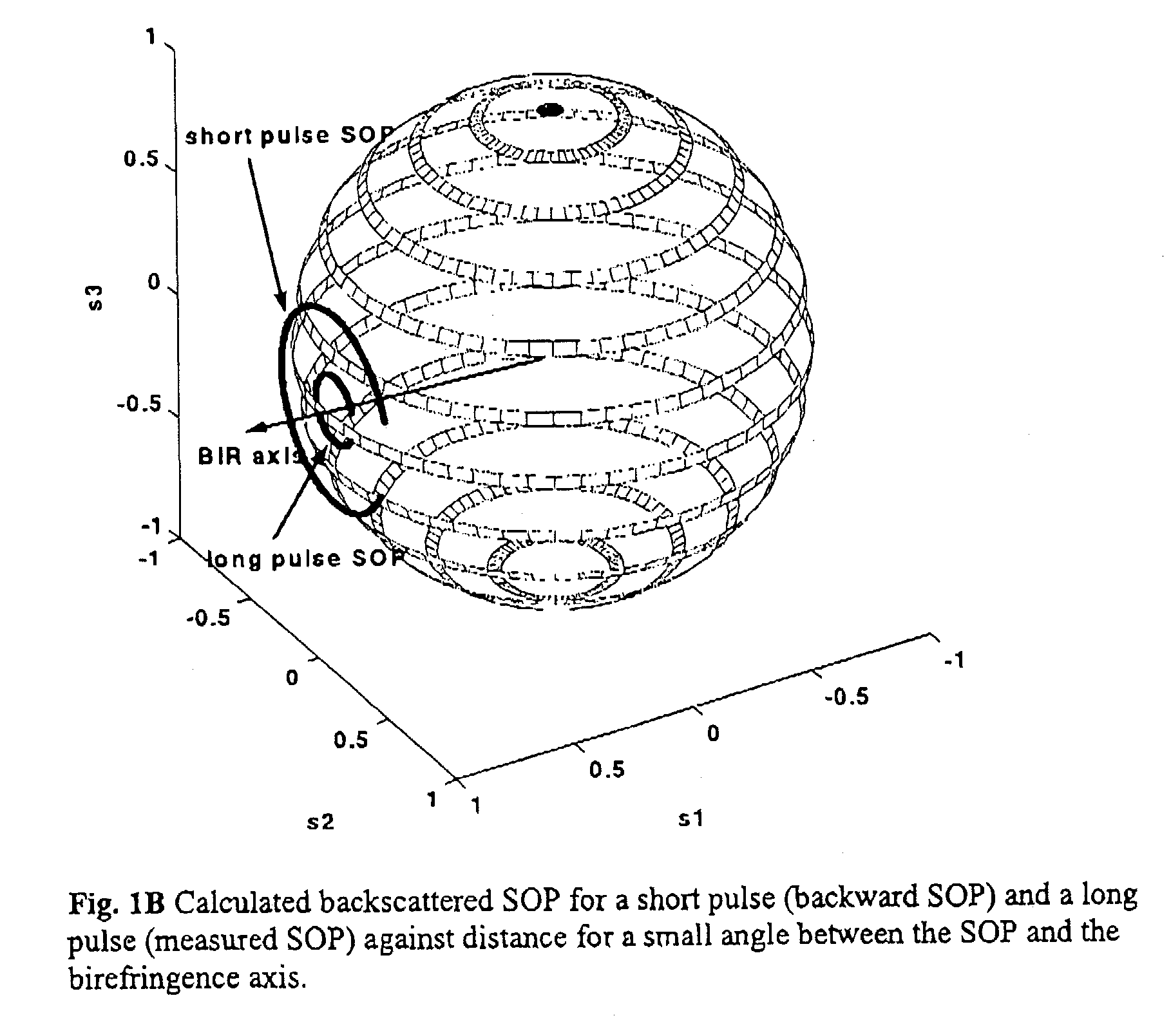Polarization-OTDR for measuring characteristics of optical fibers
a technology of optical fibers and characteristics, applied in the direction of optical apparatus testing, structural/machine measurement, instruments, etc., can solve the problems of inability to achieve the characteristics of optical fibers that are unacceptable for modern optical communication systems, and inability to achieve the characteristics of optical fibers that are not acceptable to the general publi
- Summary
- Abstract
- Description
- Claims
- Application Information
AI Technical Summary
Problems solved by technology
Method used
Image
Examples
Embodiment Construction
[0051] Referring to FIG. 4, a P-OTDR comprises a pulsed optical source 10 for supplying pulses of polarized light and a polarization state adjustment (PSA) means 12 coupled to the source 10 for receiving the light pulses and adjusting their states of polarization successively to each of several different SOPs. A branching device 14, for example a circulator, a three-port coupler or a four-port coupler, couples the pulses from the output of the PSA means 12 to the fiber-under-test (FUT) 16. A polarization analyzer 18 coupled to branching device 14 receives the backscatter signal from the branching device 14, analyzes it and supplies it to a detector 20 which converts it to an electrical signal which it supplies to a measurement and control unit 22. The latter controls the optical source 10, PSA means 12 and analyzer means 18.
[0052] Preferably, source 10 is a narrow-linewidth source, such as a distributed feedback laser, to avoid spectral depolarization. Typically, the line width is l...
PUM
| Property | Measurement | Unit |
|---|---|---|
| coupling length | aaaaa | aaaaa |
| coupling length | aaaaa | aaaaa |
| coupling length | aaaaa | aaaaa |
Abstract
Description
Claims
Application Information
 Login to View More
Login to View More - R&D
- Intellectual Property
- Life Sciences
- Materials
- Tech Scout
- Unparalleled Data Quality
- Higher Quality Content
- 60% Fewer Hallucinations
Browse by: Latest US Patents, China's latest patents, Technical Efficacy Thesaurus, Application Domain, Technology Topic, Popular Technical Reports.
© 2025 PatSnap. All rights reserved.Legal|Privacy policy|Modern Slavery Act Transparency Statement|Sitemap|About US| Contact US: help@patsnap.com



